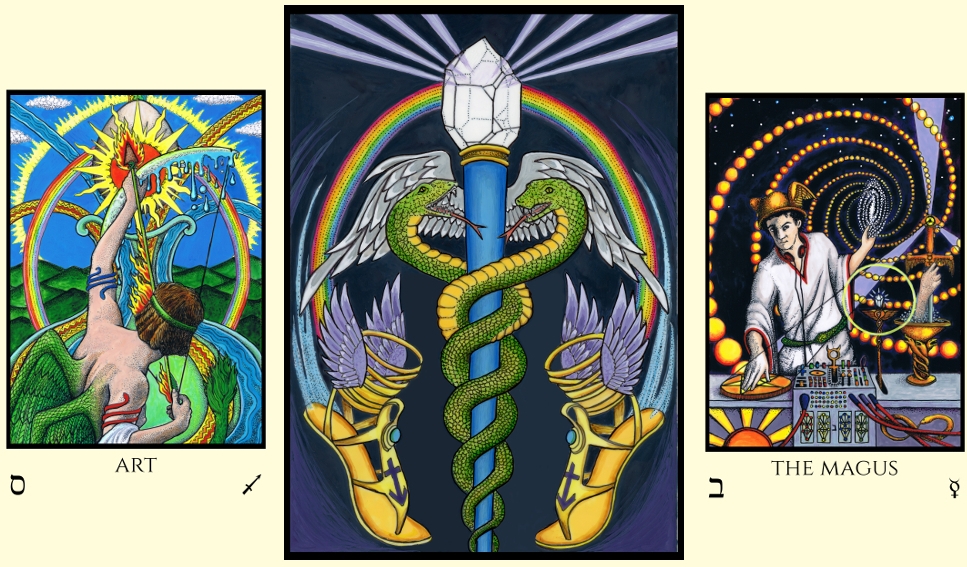
In my last blog post I *very* briefly talked about the process I’m using for creating the art for my next tarot deck, as yet not publicly named. To recap, for each card I have been:
- studying the description in the *source text* (more specifics about what text that is and why in a future post)
- using visualization and astral/imagination techniques to picture that description – and combining the specifics of the description with my own personal language of symbolism associated with the card correspondences
- gathering inspirational materials, models, and resources to help the drawing process
- doing a very rough and dirty pencil sketch to get the idea and proportions in place
- using that sketch as a template for inking the bare bones line work, and perfecting the elements of the drawing
- after this, at some point doing the shading and coloring of the image (of course with the GD color scales)
But these six steps leave out a critical 7th step, which is both the first and last step in the process – and that is about having magical intention as part of the process. I thought maybe there would be interest in that as well. In a sense, magick and art can both be very simply defined as thinking of something and making it manifest, via purposeful manipulation of energy. I make no claims of being an accomplished magician, but I do practice, and sometimes succeed. It takes long term application of will and focus to make 78 cards of art, and these qualities are useful in magical applications as well.
For me, making art is certainly about making beautiful images. I love hearing people say they find my tarot art beautiful. The smart readers recognize that it is more as well. I always hope people also see the level of thought as well as care that went into the works. It’s about making intelligent images. “Intelligent images” in this case means more than one thing. On the mundane level, it means that the images are well thought out, that I as the creator of them am doing a lot of thinking, and intuitively drawing on decades of accumulated knowledge and lore about all sorts of things that go into the cards, like Symbolism, Astrology, Mythology, Numerology, and Qabalah. The art intelligently incorporates the appropriate symbolism according to esoteric tarot teachings and doesn’t just insert a lot of new age visual jargon in there, popping in magical symbols so that it looks cool. Everything is considered and there for an actual reason, that begins to describe the intersection of Art and Magick.
For they are intelligent images in a different sense. The reason for incorporating these elements, chosen from traditional esoteric correspondence sources, is to make the artwork a suitable container for the indwelling of the appropriate energy, or you could say, spirit. These “spirits”, that are said to be the beings we communicate with (whether we acknowledge it or not) when we read the cards, are intelligences. To some extent they have sentience, in that we can communicate with them, and they can have something to say back to us in turn. We can have an actual conversation with a card, and get information not generally available to our normal consciousness. There is something beyond the ink and paper that can be “contacted” or tapped into and does have a unique “personality” and even is capable of intelligent response. Whether that is within or without us is up for debate.
To offer a popular misquote, “if you build it, they will come”. I believe that in order to make a tarot card a suitable vessel, the correspondences illustrated have to be appropriately resonant with the spirit or archetype I’m trying to attract. BUT there is more to magick than choosing correspondences! That type of thing is very Mercurial, very 8th sephira Hod, very reasonable but rather intellectual and lifeless in and of itself. Crowley defined Magick as “the science and art of causing change to occur in conformity with the will” and that is a perfect definition. Though “science” is needed, it needs more than just the logic of Mercury. It needs the “art” as well as the science. In order to magically make a work a container for spirit: we need Venus in addition to Mercury. We need the Venusian, the 7th sephira Netzach, the fire and feelings, the love of beauty, the enlivening factor of the heart that loves beauty and knows how to use the powers of attraction. The image must also be beautiful, loved by the senses. For the ancients in Greece and Egypt knew, that in order for the animating force to come into a work of art – particularly when it was a statue of a god or goddess – the proportions had to be beautiful, the face and features idealized as well as representative of the archetype. For this reason, I prefer ideal and beautiful images to realism, and incorporate principles of sacred geometry and design into the work. Not everything has to be beautiful to be art, but it has to have beauty in some form, if that makes sense.
The magical artist needs both the hand and the eye: the mind and hand skills of Mercury and the eye for beauty represented by Venus.
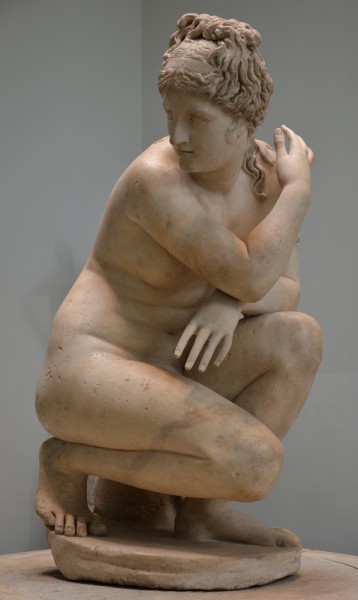
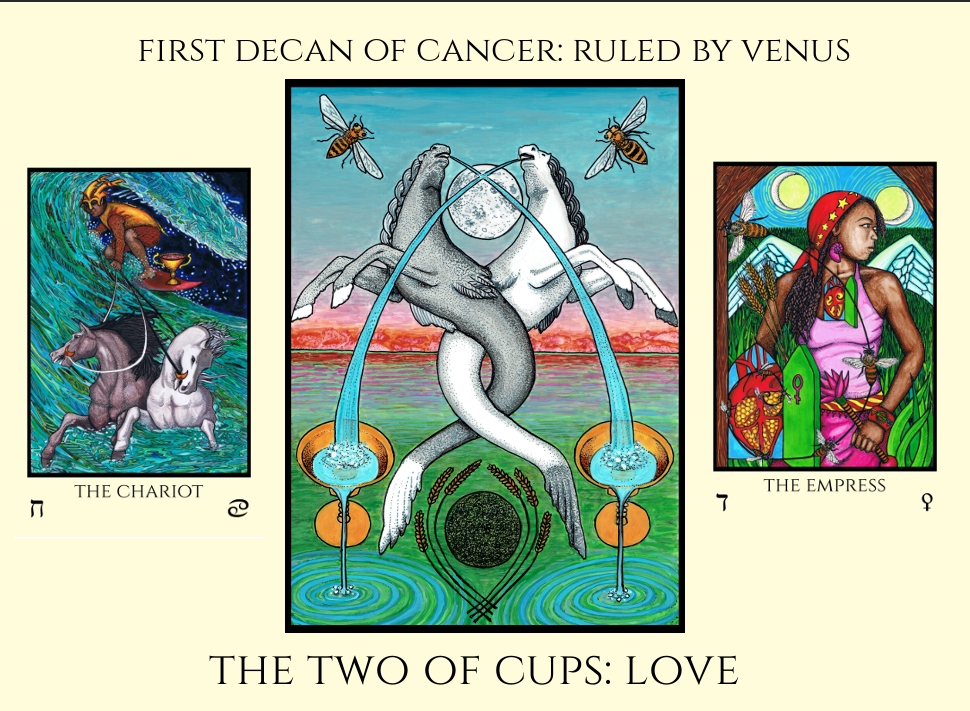
We need both the intellect and dexterity of Mercury (Hod) and the attraction capabilities and inspiration of Venus (Netzach) for inspired and ensouled artistic creations to occur – and we need to merge and reconcile them along the Middle Pillar. Yesod, the sephira of the Moon, between that of Mercury and Venus, is appropriately sometimes called “The Treasure House of Images” (note that Treasure=Venus and House=Mercury) and for me, I think it is here that the reconciliation happens that allows for the intellectually sorted correspondences and the emotionally chosen inspirations to combine via intuition and the astral to create “Images” or reflections. The sephira of the Moon is associated with the astral light – which is reflected, having been generated by the Sun in Tiphareth. The Sun is our own inner genius, the heart (that ultimately receives its inspiration from deity above in Kether). The light of our inner genius is reflected in the astral via the light of the Moon.
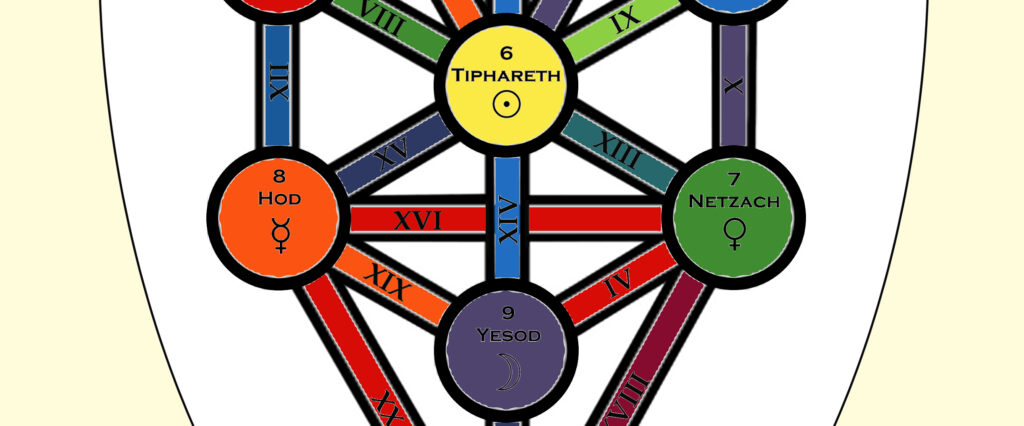
Magick can be defined as making something happen through force of will (fixed Fire) + desire (fixed Water) + knowledge (fixed Air) + grounding (Fixed Earth). You could also say “Creation on earth = will + love + reason + action”. These could, in a way, somewhat correspond to the four sephiroth shown above.
I believe that the artist, like the magical practitioner, stands within the diamond of these four sephiroth: Hod/Mercury and Netzach/Venus on the horizontal plane and Yesod/Moon and Tiphareth/Sun on the vertical plane. (Instead of the “triangle of manifestation”, we could call it the “diamond of art”!) We reconcile and combine these energies on the crossroads where the path of Art (the Temperance card, as referring to tempering) intersects with the hot flash of inspiration and energy that is the Tower, and we manifest it down here on Earth (Malkuth) where actual shit gets done – err, I mean, matter gets created. Yes, the Tower is associated with destruction as well as the lightning of inspiration. But the artistic creative process is one of destruction, as once the image is actually created, an infinite number of potential images the artist held in the astral that could have occurred instead are effectively destroyed.
Besides the “crossroads” path of Art/Temperance and Tower, it’s also interesting to look at the other paths that form the outer part of the “diamond”: Death and the Devil, and the Sun and Emperor. Death and the Devil clearly show the artistic process as the creation of matter and the astral forms subsequently destroyed, while the Sun/Emperor pair illustrates art as something seen that illuminates (the Sun) and the structure of good design and proportions (Emperor, Aries where Sun is exalted). Even if you don’t accept Crowley’s Emperor/Star path switch, the Star works as well, as it is also a Sun, and a card of idealism and beauty.
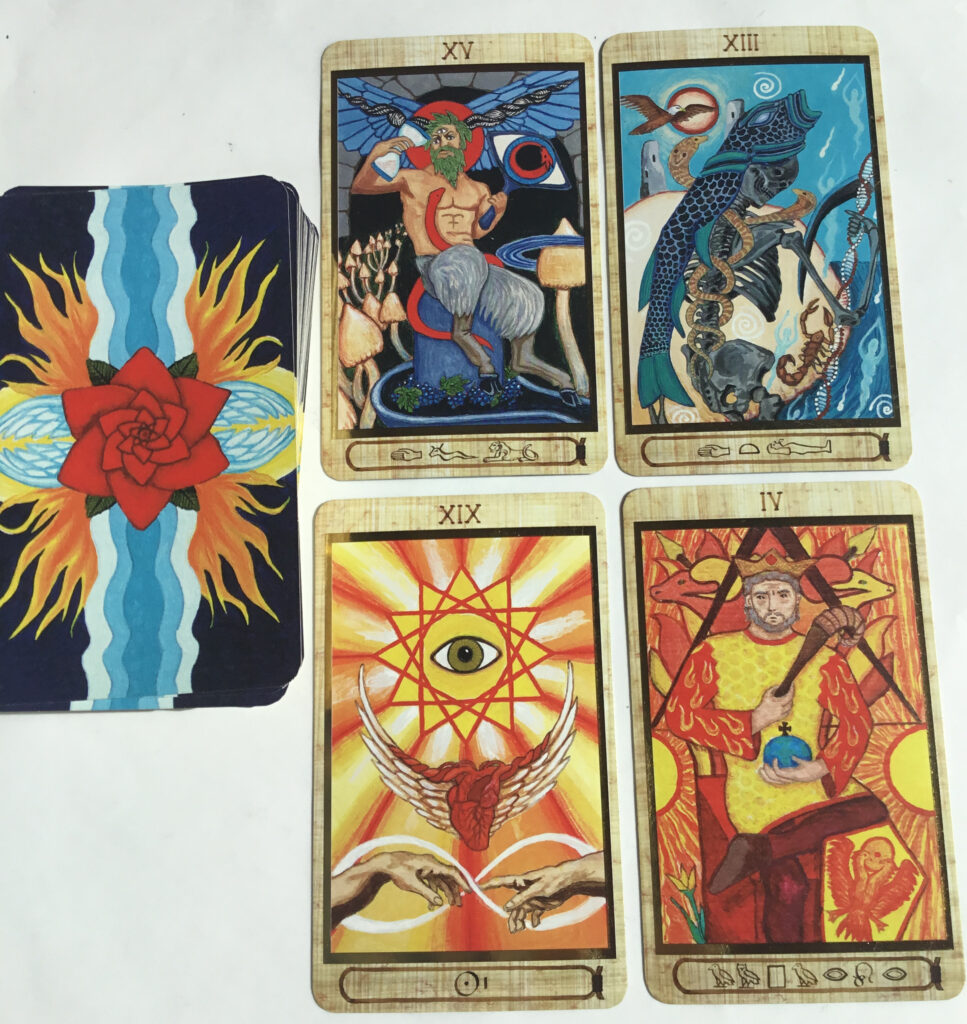

So how are the energies we want to indwell the image evoked here on Earth, besides through creating an image of idealistic beauty, that is well-thought-out with appropriate correspondences, inspired on the astral, well proportioned, and drawn down from above? I try whenever possible to use appropriate timing, for example starting an image for the Empress, card corresponding to Venus, on a Friday, preferably also during the hour of Venus, or beginning the Lust/Strength card on a Sunday/Sun hour since the card corresponds to Leo, ruled by the Sun.
For the Fool in my newest deck, I started the ritual of formally inking it with a ceremony during the conjunction of Jupiter and Saturn we had in the sky at the beginning of this year, that ushered in a whole new 200 year cycle, a series of Air sign conjunctions beginning with Aquarius. This once-in-a-lifetime occurrence (PORTAL), involving these father, sky, and creator gods of chaos, was perfect for embodying the energy of the tarot Fool, who is the chaotic creator god of Tarot and whose correspondence is Air. And yes, divination also agreed that it was the right time to create this new Fool card, under the portal of these energies.
Speaking of the Fool card…imagine that you were Pamela Coleman Smith, and A.E. Waite of the Golden Dawn is “spoon-feeding” you the elements of the card. “Pixie, ” he says, “the figure should be an effeminate youth. He should wear a feathered cap and carry a vagabond’s bag-and-stick in one hand, and a rose in the other. Under a white sun he walks without a care in the world, nose in the air, seemingly unconcerned as he is about to walk off of a cliff. Mountain peaks in the distance, oh and a little white dog should accompany him.” You, as PCS, say, “OK, no problem; I can do that.” And with beautiful simple lines, the iconic image we all know was born. We might imagine that’s easy, and maybe it was for her. Art doesn’t just flow from one’s fingertips, but it was surely an act of magic. It now exists in thousands and hundreds of thousands of decks, and in even more minds. You just imagined it now, called it to you on an astral level.
Now let’s try a harder one. Imagine you are Freida, Lady Harris. Aleister Crowley has agreed to teach you magick as he directs the art of his own tarot deck, also in the Golden Dawn tradition but under his auspices. Freida first paints curly haired Harpo Marx as the Fool – and Crowley roundly berates it – for after all he doesn’t want to be laughed out of town by his Golden Dawn bros. “Freida,” he says, “while Harpocrates certainly applies, ditch the Harpo idea. The figure should be a Dionysian horned god, green and gold, showing all the madness and frenzy of spring. He should be bursting through the three negative veils of existence, in mid air, while carrying a crystal water chalice, and a flaming pine-cone, and mixing the elements. A crocodile and tiger should harry him, and make sure you include a vulture, a caduceus, two infants embracing, the sun and moon, the rose, the diamond, a butterfly, ivy, grapes, a dove, the benediction of three-flowers in one and…are you getting all this? Oh and he also must be carrying a bag that contains the entire Universe.” I can imagine Freida thinking…”Ookaaaaaaaaayyyyyy…what have I gotten myself into!?” You have to admit, she pulled it off. Very inspiring.
So this is a bit of what I put myself through for my own Fools, as I have to split myself in two in order fill the creative roles of both Waite/Crowley and Smith/Harris. For Rosetta, the assignment was quite Thoth based. “Make a Dionysus figure, horned and stepping through an Ouroboros portal in space. Keep that fire cone/water chalice admixing thing, and the harrying tiger and croc and all those other symbols too if you can.” That wasn’t so bad, it was a lot easier than Freida’s assignment. For the next deck, Tabula Mundi, the muse had to assign something more challenging. “This time make the green dude more virile, do better with anatomy while you are at it, and keep the creatures and the elements and the three-negative-veils of existence, but have him about to step into a wormhole in space-time.” (It’s a miracle that one happened.) The next Fool I did (which has not made it into a deck, yet, but some of you have seen here) broke away from the stepping off a cliff, or through a portal or wormhole or what-have-you, and instead made him the “babe in the egg of blue, breaking out of the egg upon the lotus carried by/harried by twin crocodiles of Harpocrates.” After that one came more Fools. The official one that ended up in Pharos Tarot had the Fool as Phanes Lightbringer, just emerged from the cracking of the world egg, riding the light through the three veils and from Kether headed towards Malkuth. The hardest part of that assignment was that I had to convincingly portray someone riding Light itself.
The reason I’m telling this story of the (past present and future) Fools, was that the deck I’m working on now came about because of inspiration related to the Fool card and difficulties with artistic assignments like this. That text I’m working with as the “assignment” for this deck, has one of the most challenging descriptions of the Fool card I’ve ever seen – I mean, read. It’s perfectly relevant, elegant even, but I can see why there isn’t a deck out there that I’m aware of with a Fool that looks exactly like it, as it crams so many hard to draw elements into it. For years I’d read it and walk away, saying “Too hard!!” But finally I had an epiphany: if I can find a way to paint a portal, the negative veils, a wormhole in space-time, a hatching child, and a dude riding light, well I may as well give this one a try too. (I’m laughing here.) I won’t describe him here, as I haven’t shown him to you yet, but when I tell you the description you will get why it was a difficult thing to consider the composition of. Like a lot of things in life, as it turns out it wasn’t as hard as it seemed, once the force of will was behind it.
The point is, that you can create something that does not yet exist, you can make something happen here on earth through force of will by purposely directing energy. That’s magick!
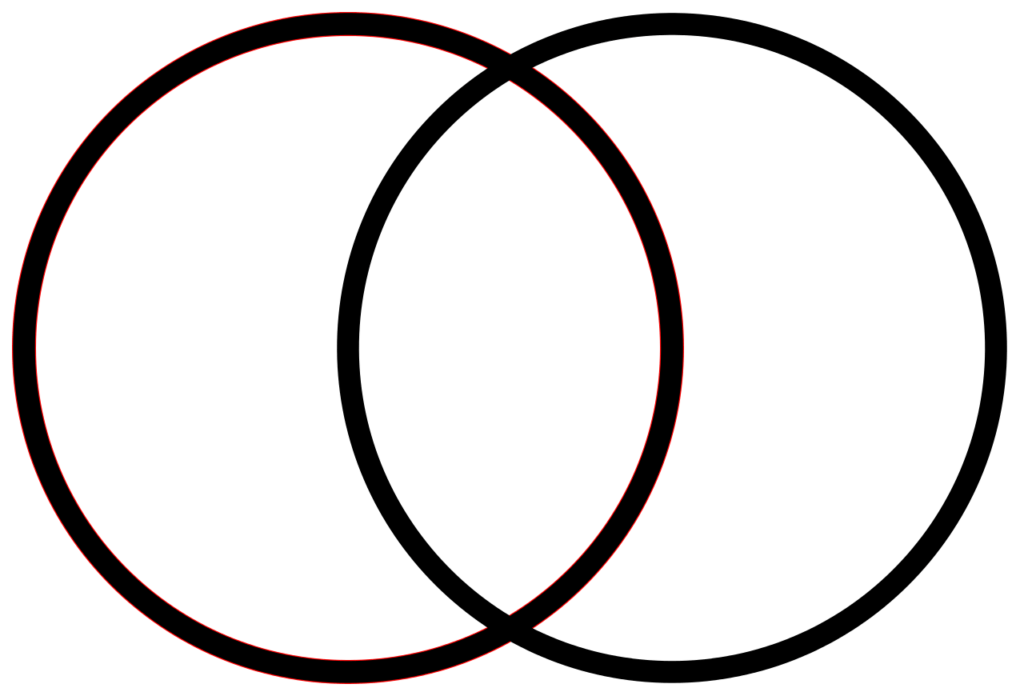
So back to magickal methods. I do use astrological timing for these works. HOWEVER – creating 78 works of art, especially magically correct art, takes A LONG TIME. At least for me. If I only worked on a piece during perfectly timed astrology electionals or even only during the appropriate planetary day and hour it would never get done! So while I do strive to at least begin a piece during the right astrological time – the right time to do any magical work is in that elusive Venusian Venn diagram Vesica Piscis window where your time and energy or inspiration intersect and align. If I’m inspired and have time NOW I’m going to work on it, because time and energy are precious commodities not to be squandered.
Thus I also incorporate other methods of infusing the work with the appropriate archetypal resonances, when astro-timing isn’t perfect. The work area can be surrounded by ritual tools, elemental items, and sacred statues of appropriate gods or goddesses. Sound can be used via music or the ringing of bells or tuning forks in the appropriate key. The correct scents can be burned, or applied via plant hydrosol or essential oil to the artist; the correct colors, or gems, or metals, or talismans or planetary malas can be worn, the appropriate planetary Sanskrit mantras chanted or played; the Orphic hymns, or personal poems or prayers can be recited, or the right offerings made. Sigils can be added to or hidden in the artwork. Sacred geometry grids of appropriate numerology can underlie a work invisibly or visibly. I have used all of these methods either individually or in some combination. If it works out, you could use them all at once, but it is rare that it is practical to do so. Working on the art in stages, where sometimes it can be at propitious times and at other times with different resonances used, helps; but never let time perfection or ritual perfection get in the way – perfect is the enemy of good. The image can always be consecrated at the appropriate time after it is complete.
Those methods above are all correspondences and thus mind oriented (Mercury). But I’m also looking for a feeling of falling in love with the image and the process of creation (Venus) – that can only be experienced. That’s an indication that the magic is working.
You actually don’t need any of the ritualized aspects, making a work of art is in and of itself a magical act. The artist dreams up something that does not exist, and makes it exist, via focus and sheer force of will. But the ritual helps invoke the feeling within you, so that you can evoke it in the art.
Tip for artists: When inspiration is needed, working with both Mercury (Magus, Ganesha, Hermes, Thoth) and Venus (Empress, Lakshmi, Aphrodite, Hathor) placed side by side near the blank canvas while chanting an appropriate seed mantra and making offerings of fire, scent, and water, or food and flowers, can help. On the Tree of Life, between the sephira for Mercury and that for Venus is the path of the Tower – any blockage will be removed, and then inspiration can come in. (You could even use Hadit and Nuit as stand-ins for Mercury and Venus, for their third is Horus who is also quite a Mars-type influence.)
The important thing is that the images just need to happen one way or another, and be inspiring to me as the artist. (note: the artist should go through a process of falling in love with the image, and the same is for the practitioner and the magical act.) Hopefully it is thus also inspiring to the spirits, and to those of the eventual viewers of the cards (you) who take them in through the eyes. For we do take in the essences of god forms through the eyes, and are affected by them. In Hindu philosophy there is a term called darshan, Sanskrit for “viewing”, that refers to the process of beholding the image of a deity or a sacred object, and the reciprocal nature of that viewing where the deity or sentience of the object also views and blesses you, affecting change. The image (and actually, all created things of this universe) combines both matter (prakriti, nature existing in time and space) and spirit (purusha, consciousness). These images of deity were sometimes brought out from the temple and driven through the streets in a chariot so that all could venerate them and in turn receive darshan of the sacred object. It’s interesting in terms of the Chariot card of Tarot, which is often interpreted as the vehicle of the sacred spirit or precious object, protected in an enclosure and carried forth to do one’s will.
When making an “ensouled” work of Art, I like to keep an awareness of the “elemental powers of the Sphinx”, with the sphinx as a stand-in for mankind’s evolutionary process as a utilization of the combination of all four elements, which when successful creates a unifying fifth element of spirit that allows progress forward. For any magical work we first Will it, then we Dare to do it and fall in love with it, we reason and Know it, and for maximum effectiveness we maintain a certain level of Silence around it to bank the energy. Only then do we Go forth and take action, bringing something into being.
Want to follow along with the creation of this deck or see when more articles like this post? Sign up for the newsletter! No spam and your info is never shared. It comes out monthly if all is going well, though sometimes a month gets skipped!
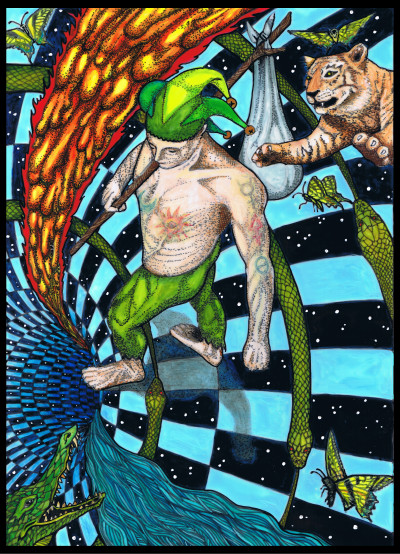
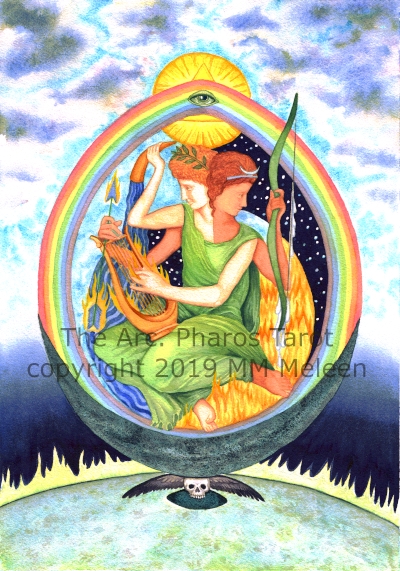
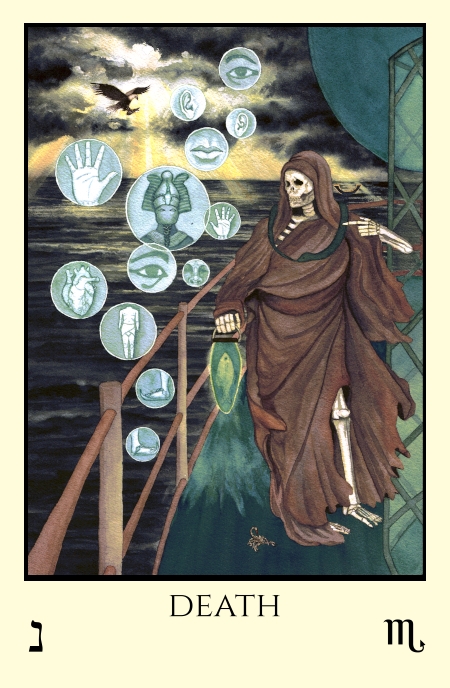
Thank you for this post. Appreciate your thoughts and time taken in sharing. You seem as eclectic and open minded as myself when it comes to being a lifetime student of Tarot – all information is helpful.
Thanks again, K.
Thank you!
It is really fun and inspiring to watch you work like this. So many playful touches as well. (I learn so much so quickly from that.) Best wishes!
Thank you!!
Hello! I’m a longtime fan of your work and a longtime lurker. I’ve never commented before because I don’t know anything about esoterics, but today I was moved to say I have both of your 78 card decks and it’s been a pleasure playing with them and also seeing how your art style changes with each new deck; and your new 3 cards look awesome, and I can’t wait to see more. Even though I don’t understand many of the elements on any card, I still feel drawn to your art. I feel the same way about your blog: though much of it goes over my head, I find it fascinating to read about your process and I feel compelled to learn more about all these topics somewhere down the line in my journey. Anyway, thanks for sharing all of this with us!
Thank you, BA!!